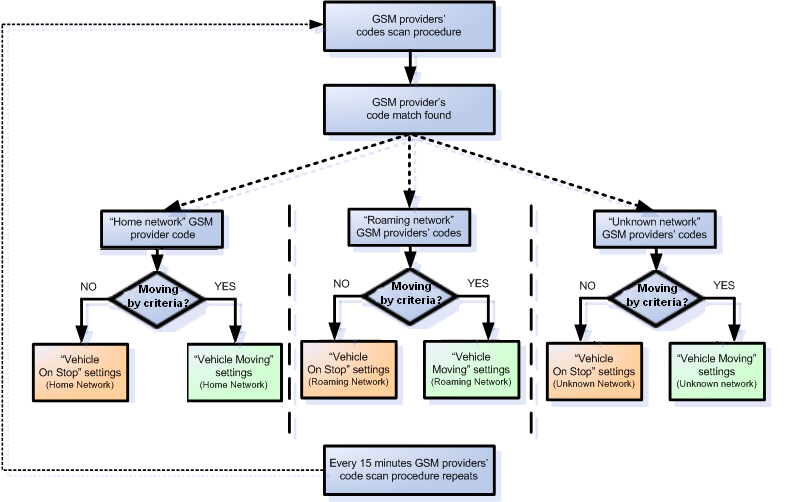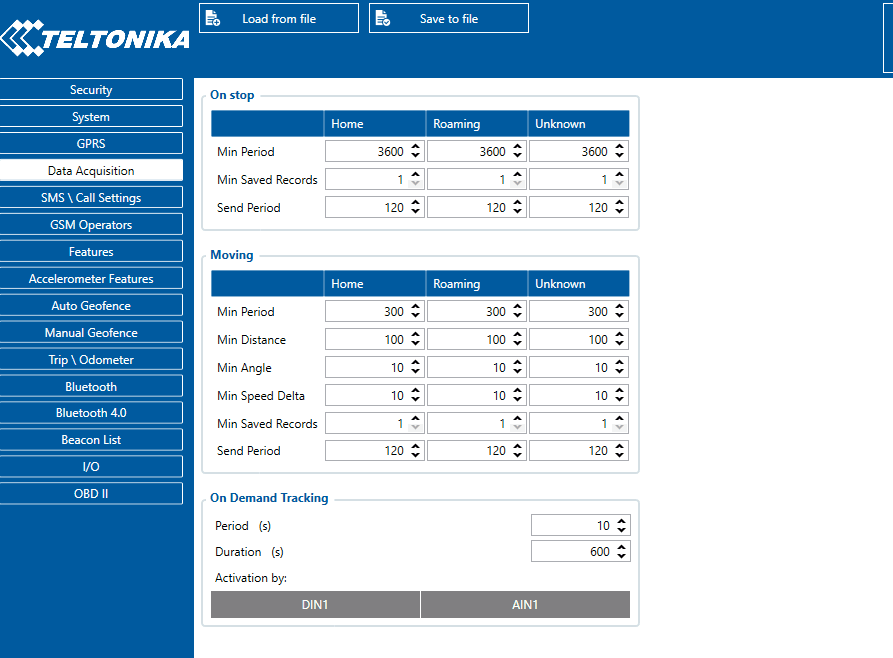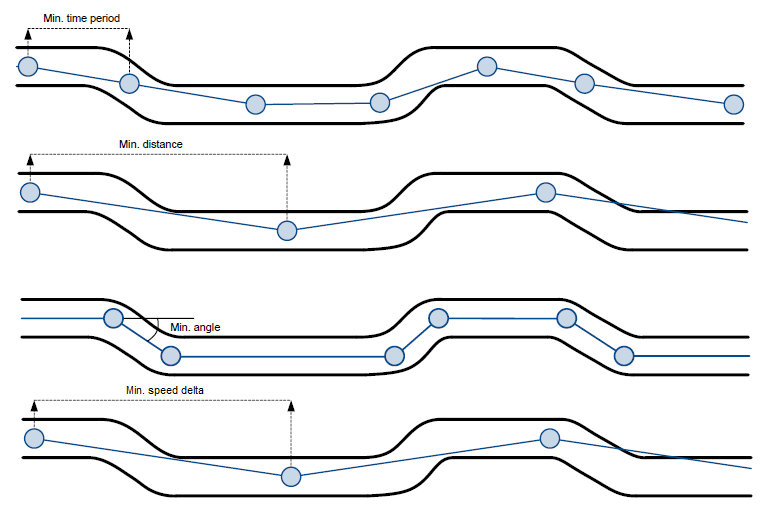Difference between revisions of "FMB125 Data acquisition settings"
Atabasnikov (talk | contribs) m (Protected "FMB125 Data acquisition settings" ([Edit=Allow only administrators] (indefinite) [Move=Allow only administrators] (indefinite))) |
|||
| (One intermediate revision by one other user not shown) | |||
| Line 1: | Line 1: | ||
{{Template:FMB Data acquisition settings|model=FMB125|ctrGsm=[[FMB125 GSM Operators settings|GSM Operators settings]]|ctrSystem=[[FMB125 System settings|System settings]]}} | {{Template:FMB Data acquisition settings|model=FMB125|ctrGsm=[[FMB125 GSM Operators settings|GSM Operators settings]]|ctrSystem=[[FMB125 System settings|System settings]]}} | ||
| − | |||
Revision as of 11:59, 23 May 2018
Main Page > Professional Trackers > FMB125 > FMB125 Configuration > FMB125 Data acquisition settingsData Acquisition
Data Acquisition modes are an essential part of FMB125 device, they are also highly configurable.
Through configuration user defines how records will be saved and sent. There are three different modes: Home, Roaming, and Unknown. All these modes with configured data acquisition and report frequencies depend on the current GSM Operator defined in the Operator list (see section GSM Operators settings) and are switched when GSM operator changes (e.g. vehicle passes through a country border).
If current GSM operator is defined as Home Operator, the device will work in Home Data Acquisition mode, if the current operator is defined as Roaming Operator, the device will work in Roaming Data Acquisition mode, and if the current operator code is not written in the Roaming Operator list, the device will work in Unknown mode.
This functionality allows having different AVL records to acquire and send parameter values when the object is moving or standing still. Vehicle moving or stop state is defined by the Stop Detection Source parameter. There are 4 ways for FMB125 to switch between Vehicle on Stop and Vehicle Moving modes, please refer to the first table in System settings.
FMB125 has 6 different modes. Operational logic is shown in the figure below.
| If home operator is written to roaming operator list, it will still be detected as home operator. |
The operator search is performed every 15 minutes. Depending on the current GSM operator Home, Roaming or Unknown mode can be changed faster than every 15 minutes. This process is separate from the operator search. Movement criteria are checked every second.
Record Saving settings
Min Saved Records defines the minimum number of coordinates and I/O data that should be transferred within a single connection to the server. If FMB125 does not have enough coordinates to send to the server, it will check again after a time interval defined in Send Period field.
Send period controls the frequency of data being sent to the server over GPRS. The module makes attempts to send collected data to the server every defined period of time. If it does not have enough records (depends on the parameter Min. Saved Records described above), it tries again after the defined time interval.
| Keep in mind that FMB125 operates in GMT:0 time zone, without daylight saving. |
FMB125 is able to collect records using four methods at the same time: time, distance, angle, and speed-based data acquisition:
- Time based data acquisition (Min Period) – records are acquired every time when a defined interval of time passes. Entering zero disables data acquisition based on time.
- Distance-based data acquisition (Min Distance) – records are acquired when the distance between the previous coordinate and current position is greater than a defined parameter value. Entering zero disables data acquisition based on distance.
- Angle based data acquisition (Min Angle) – records are acquired when the angle difference between the last recorded coordinate and current position is greater than a defined value. Entering zero disables data acquisition based on the angle.
- Speed based data acquisition (Min Speed Delta) – records are acquired when the speed difference between the last recorded coordinate and current position is greater than a defined value. Entering zero disables data acquisition based on speed.
On Demand Tracking
This functionality was made global (for all FMB devices) from 03.25.06.Rev.00. Tracking on Demand can be activated using commands. After device receives SMS/GPRS command " on_demand_trackingX" where X is a number from 0 to 2.
Possible X values are:
- X = 0 – Stops Tracking on Demand functionality.
- X = 1 – Starts Tracking on Demand functionality.
- X = 2 – Generates one high priority record and initiates data sending to the server.
After that, the device starts to generate high priority records and initiate data sending to the server. This
feature is configurable via SMS/GPRS commands only.
From version 03.25.11.Rev.00 tracking on demand can be triggered by multiple IO Events. To enable functionality at least one activation source must be selected and an appropriate IO Event (in I/O tab) should be enabled (Low/High/Panic priority, the operand must NOT be “Monitoring”). When IO Event is generated and if the event is enabled in activation sources, tracking on demand will be started. THE new IO event will not interrupt or restart tracking on-demand until the Duration period has expired. If tracking on demand is already running, SMS/GPRS command will restart tracking on demand. If tracking the on-demand period is lower than the normal record acquisition period, only high priority records will be created. If tracking the on-demand period is larger than the normal record acquisition period, low priority records will be created according to data acquisition configuration and high priority records will be created after configured tracking on-demand period. Some new Tracking on Demand parameters are introduced in devices.
There are three available options for the activation source of tracking on demand - DIN/AIN or both (devices that support multiple DINs/AINs allow choosing which DINs/AINs to use). Note that, these inputs will work as buttons, rather than switches, and are used to trigger the functionality, the duration of tracking on demand will not be extended if the activation source status is high for a period of time.


